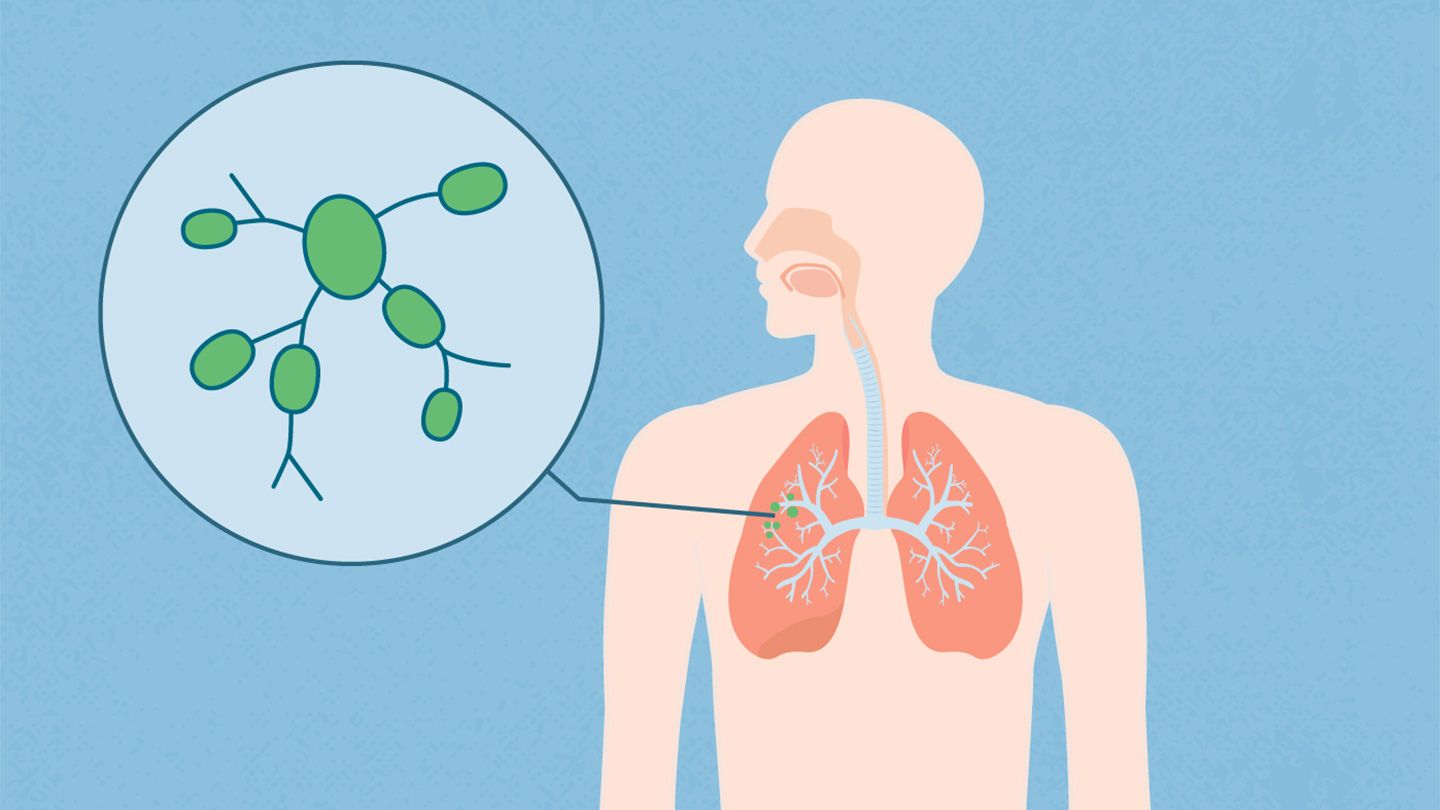Doctors assign lung cancer a stage based on the size of the tumor, whether cancer cells are in the lymph nodes, how many nodes contain cancer, and whether the cancer has spread to distant sites like the bones, brain, or adrenal glands, says Dr. Anderson.
Non-Small Cell Lung Cancer (NSCLC) Staging
Non-small cell lung cancer (NSCLC), the most common type of lung cancer, is assigned a stage number from 0 to 4. The higher the number, the farther the cancer has spread.
- Stage 0 Cancer cells are only in the layers of the lung and it hasn’t spread to any other parts of the lung or to lymph nodes.
- Stage 1 The cancer is larger. It has invaded other parts of the lung, but it has not spread to lymph nodes.
- Stage 2 The tumor is larger than stage 1 and it may have spread to nearby lymph nodes.
- Stage 3 Cancer is in the lymph nodes, possibly including nodes in the mediastinum (the area between the lungs).
- Stage 4 The cancer has spread to distant lymph nodes and organs.
Small Cell Lung Cancer (SCLC) Staging
Small cell lung cancer (SCLC) has only two stages:
- Limited stage: The cancer is on one side of the chest. It may be in lymph nodes on the same side of the chest as the tumor.
- Extensive stage: Cancer has spread through one lung, to the other lung, or to other parts of the body.
Lymph Node Classifications
The staging system takes into account not only whether lung cancer metastasis to lymph nodes has happened, but also which nodes the cancer is in. Ipsilateral means the affected nodes are on the same side of the body as the cancer. Contralateral means they are on the opposite side of the body from the cancer.
These are the lymph nodes where lung cancer can travel:
- Peribronchial lymph nodes are near the air passages — bronchi — of the lungs.
- Hilar lymph nodes are in the hilum — the area where the airways, blood vessels, and nerves enter the lungs.
- Pulmonary lymph nodes are in the lung.
- Mediastinal lymph nodes are in the mediastinum — the space between the lungs.
- Subcarinal lymph nodes are in the area where the windpipe splits into the right and left lung airways.
- Supraclavicular nodes are above the collarbone.
TNM Staging
The American Joint Committee on Cancer (AJCC) TNM system further classifies lung cancers based on these three factors:
- T: How large is the tumor and has it grown into nearby structures or organs?
- N: Has the cancer spread to lymph nodes, and if so, which ones?
- M: Has the cancer metastasized, or spread to distant organs like the brain, bones, or adrenal glands?
The N is staged from 0 to 3. The higher the number, the more lymph nodes cancer has spread to:
- N0: There is no cancer in the lymph nodes.
- N1: There is cancer in the pulmonary or hilar lymph nodes on the same side of the body as the cancer.
- N2: There is cancer in the mediastinal lymph nodes on the same side of the body as the cancer, or in the subcarinal nodes.
- N3: There is cancer in the mediastinal, hilar, or supraclavicular nodes on the opposite side of the body as the cancer.
Read the full article here




